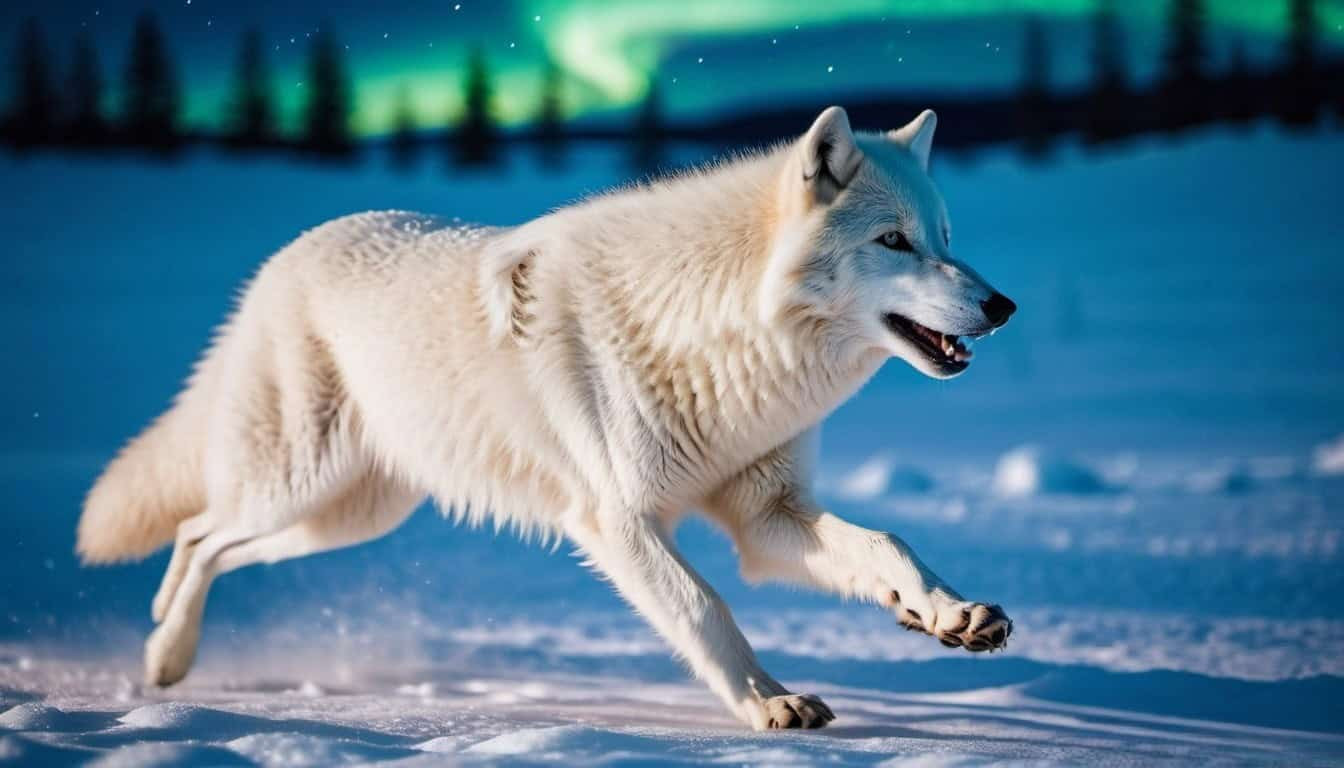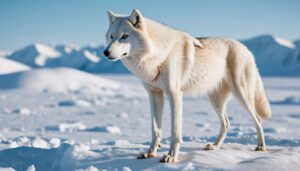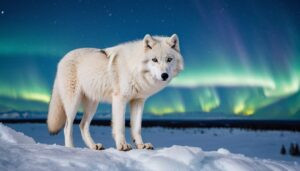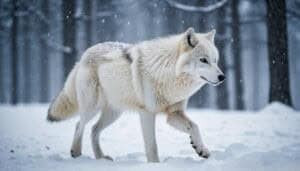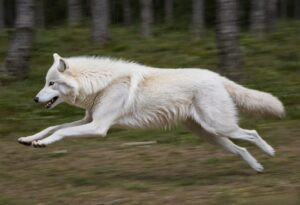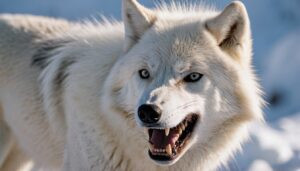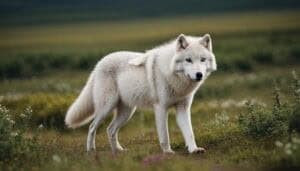Introduction
The Arctic wolf, a majestic and resilient creature, thrives in the harsh climates of the Arctic tundra. One of the key aspects of its survival is its impressive speed
This article explores the top speed of the Arctic wolf, factors influencing its velocity, and how it compares to other wolf species. We will also delve into the physical adaptations that enable these wolves to run swiftly, and the crucial role speed plays in their hunting strategies and overall survival
Top Speed of an Arctic Wolf
The Arctic wolf, adapted to one of the most challenging environments on Earth, is known for its speed and agility. Understanding the top speed of these wolves offers insights into their survival mechanisms and overall behavior
Documented Top Speeds
Research indicates that Arctic wolves can reach speeds of up to 40 miles per hour (mph) in short bursts
This impressive speed allows them to chase down prey across the icy and rugged terrain of the Arctic tundra. However, these bursts are typically short-lived due to the extreme energy required
Studies on captive Arctic wolves provide additional data on their speed capabilities. A 2010 study published in the Journal of Mammalogy recorded speeds of captive wolves at a maximum of 38 mph during controlled sprints
Such speeds are comparable to other wolf species, indicating a strong evolutionary adaptation to their predatory lifestyle
Factors Influencing Top Speed
Several factors influence the running speed of Arctic wolves, including their physical condition, age, and environmental conditions:
Physical Condition: Healthy, well-nourished wolves exhibit higher speeds compared to those that are malnourished or injured. Regular access to food and a balanced diet directly impact their muscle development and energy levels
Age: Young wolves, particularly those in their prime (2-5 years old), tend to run faster than older or very young wolves. Juvenile wolves gradually develop their running abilities through play and hunting practice
Environmental Conditions: The Arctic tundra’s terrain and weather conditions significantly affect a wolf’s running speed. Snow depth, ice cover, and temperature can either hinder or facilitate their movement. For instance, deep snow can slow down even the most agile wolves, while firm, icy surfaces may allow for faster sprints.
Speed Differences with Other Wolf Species
When comparing the Arctic wolf’s speed to other wolf species, it’s evident that they are among the faster members of the Canidae family
For example, the gray wolf (Canis lupus) can reach speeds of 31-37 mph, slightly lower than the Arctic wolf. Red wolves (Canis rufus), on the other hand, have recorded top speeds closer to 30 mph
These differences in speed can be attributed to the varying environments and prey types each species hunts. Arctic wolves, adapted to chasing quick, agile prey like Arctic hares and caribou, have evolved to be faster
Reasons for Variations
The variations in speed among different wolf species stem from evolutionary adaptations to their respective habitats and hunting needs
Arctic wolves, for example, have developed longer legs and a more muscular build to cover large distances and run quickly on snow and ice:
Prey Type: The primary prey of Arctic wolves, such as caribou and Arctic hares, are swift animals, necessitating a higher top speed for successful hunting
Habitat: The vast, open spaces of the Arctic tundra require wolves to travel long distances to find food, demanding greater endurance and speed. In contrast, forest-dwelling wolves might rely more on stealth and short bursts of speed to ambush prey in denser environments
Pack Dynamics: In species with strong pack dynamics, speed can also facilitate coordinated hunting strategies. Faster wolves can chase and tire prey, allowing other pack members to catch up and assist in the kill
Physical Adaptations for Speed
Arctic wolves possess unique physical adaptations that enable them to achieve impressive speeds necessary for hunting and survival in the harsh Arctic environment. These adaptations are a result of evolutionary processes that have equipped them to thrive in the extreme conditions of their habitat
Muscular Structure
The muscular structure of the Arctic wolf is specifically designed for both speed and endurance. Their muscles are highly developed, providing the necessary power for rapid acceleration and sustained running
Key aspects of their muscular structure include:
Powerful Leg Muscles: The hind leg muscles are particularly robust, allowing for strong propulsion and quick bursts of speed. These muscles provide the force needed to sprint after prey, especially over short distances
Endurance Muscles: Arctic wolves also possess a high proportion of slow-twitch muscle fibers, which are crucial for endurance. These fibers allow the wolves to maintain a steady pace over longer distances, essential for long hunts in the tundra
Efficient Energy Use: Their muscles are adapted for efficient energy utilization, reducing fatigue during prolonged activities. This efficiency is vital in an environment where energy conservation is critical for survival
Limb Proportions
The limb proportions of Arctic wolves contribute significantly to their running capabilities
Their legs are long and strong, providing several advantages:
Stride Length: Longer legs result in a longer stride, allowing Arctic wolves to cover more ground with each step. This increased stride length is beneficial for both speed and energy efficiency
Flexibility and Range of Motion: The joint structure of their legs, particularly the ankle and knee joints, offers a high degree of flexibility and range of motion. This flexibility aids in navigating the uneven and often treacherous terrain of the Arctic
Claw Structure: Arctic wolves have strong, non-retractable claws that provide excellent traction on icy and snowy surfaces. These claws help maintain stability and prevent slipping, enabling faster and more controlled running
Aerodynamic Features
Aerodynamic features play a crucial role in enhancing the Arctic wolf’s speed. These features reduce air resistance and streamline their movement:
Streamlined Body Shape: The body of the Arctic wolf is sleek and streamlined, minimizing air resistance when running. This shape allows them to move swiftly and efficiently through their environment
Dense Fur: While their fur is dense to provide insulation against the cold, it also lies flat against their body, reducing drag. This adaptation ensures that their speed is not compromised by the need to stay warm
Tail Positioning: The positioning of their tail during a run also contributes to their aerodynamic efficiency. By aligning their tail close to their body, they reduce wind resistance, allowing for smoother and faster movement
Role of Speed in Hunting and Survival
Speed plays a vital role in the Arctic wolf’s hunting strategies and overall survival in the harsh tundra environment. The ability to run swiftly and efficiently allows these wolves to catch prey, evade predators, and navigate their expansive territory
Hunting Techniques
Arctic wolves employ a variety of hunting techniques that rely heavily on their speed. Their prey typically consists of fast-moving animals such as Arctic hares, caribou, and muskoxen
Here’s how speed contributes to their hunting success:
Chasing Prey: The primary hunting method for Arctic wolves involves chasing down prey. Using their top speeds, wolves can close the distance between themselves and their prey quickly, especially in the open tundra where there are few places for prey to hide
Endurance Hunting: In addition to short bursts of speed, Arctic wolves often engage in endurance hunting. They pursue prey over long distances, wearing them down over time. This strategy is particularly effective against animals like caribou, which may not have the same stamina as the wolves
Coordinated Pack Hunts: Speed is crucial during coordinated pack hunts. Wolves often work together to encircle and isolate a single animal from a herd. Individual wolves may take turns sprinting to keep up the chase, ensuring that the prey is constantly fatigued and unable to escape
Escaping Predators
While Arctic wolves are apex predators, they sometimes face threats from other large predators or humans
Speed is essential for their defense mechanisms:
Quick Evacuation: In case of sudden threats, Arctic wolves can quickly evacuate their dens and relocate to safer areas. This agility ensures the safety of the pack, especially the vulnerable pups
Outrunning Predators: When confronted by potential threats like polar bears, wolves use their superior speed to outrun and evade danger. Their agility and quick reflexes are advantageous in such situations, ensuring their survival
Pack Coordination
Speed also plays a significant role in the social dynamics and coordination within a wolf pack:
Communication and Coordination: During hunts, wolves communicate and coordinate through body language and vocalizations, often facilitated by their swift movements. Speed allows them to relay signals quickly and maintain cohesion during the hunt
Hierarchy and Play: Within the pack, speed is a factor in establishing hierarchy and bonding. Young wolves often engage in playful chases, which help them develop their running skills and physical fitness. These activities also reinforce social bonds and pack structure
Territorial Defense: Speed is essential for territorial defense. Arctic wolves patrol their large territories, often covering vast distances to mark their boundaries and ward off intruders. Quick movement is necessary to efficiently cover these areas and maintain control over their territory
Conclusion
The speed of the Arctic wolf is a testament to its remarkable adaptation to the challenging Arctic environment. This article has explored various facets of the Arctic wolf’s speed, including its top running speed, physical adaptations, and the critical role speed plays in hunting and survival
By examining documented speeds and comparing them to other wolf species, we have highlighted the unique characteristics that enable these wolves to thrive in their icy habitat
Additionally, the physical adaptations such as muscular structure, limb proportions, and aerodynamic features are tailored to enhance their running capabilities. Finally, the importance of speed in hunting strategies, evading predators, and maintaining pack dynamics underscores its essential role in the Arctic wolf’s life
Understanding these aspects not only provides insights into the Arctic wolf’s behavior but also emphasizes the intricate balance of nature’s adaptations in one of the harshest environments on Earth
